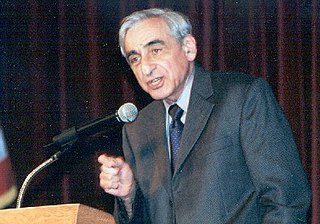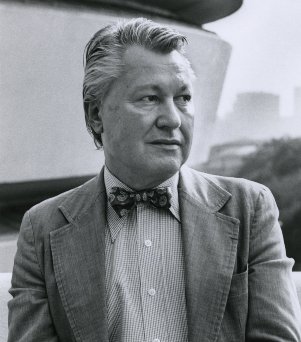Related Research Articles

Michael Laban Walzer is an American political theorist and public intellectual. A professor emeritus at the Institute for Advanced Study (IAS) in Princeton,New Jersey,he is editor emeritus of Dissent,an intellectual magazine that he has been affiliated with since his years as an undergraduate at Brandeis University. He has written books and essays on a wide range of topics—many in political ethics—including just and unjust wars,nationalism,ethnicity,Zionism,economic justice,social criticism,radicalism,tolerance,and political obligation. He is also a contributing editor to The New Republic. To date,he has written 27 books and published over 300 articles,essays,and book reviews in Dissent,The New Republic,The New York Review of Books,The New Yorker,The New York Times,Harpers,and many philosophical and political science journals.

Thomas E. Crow is an American art historian and art critic who is best known for his influential writing on the role of art in modern society and culture. Since 2007,Crow has served as the Rosalie Solow Professor of Modern Art at the Institute of Fine Arts,NYU.
John Michael Montias was a French-born American economist and art historian,known for his contributions to cultural economics,particularly related to Dutch Golden Age painting. Montias was part of the Annales School of historians. He was Professor of Economics Emeritus at Yale University.
Max Kozloff is an American art historian,art critic of modern art and photographer. He has been art editor at The Nation,and Executive Editor of Artforum. His essay "American Painting During the Cold War" is of particular importance to the criticism on American Abstract Expressionism.

Joseph Leo Koerner is an American art historian and filmmaker. He is the Victor S. Thomas Professor of the History of Art and Architecture and Professor of Germanic Languages and Literatures at Harvard University. Since 2008 he has also been Senior Fellow at the Harvard's Society of Fellows.
Alexander Nemerov is an American art historian. He is the Carl and Marilynn Thoma Provostial Professor in the Arts and Humanities at Stanford University. He specializes in American art dating from the nineteenth and twentieth centuries.
Jane Kamensky,an American historian,is a professor of history at Harvard University. On October 17,2023 the Thomas Jefferson Foundation,which owns and operates UNESCO World Heritage Site Monticello,in Charlottesville,VA announced Kamensky would assume the Presidency of the Foundation in January,2024. She is also the Carl and Lily Pforzheimer Foundation Director of the Schlesinger Library.

Thomas Maria Messer was the director of the Solomon R. Guggenheim Foundation,including the Solomon R. Guggenheim Museum in New York City and the Peggy Guggenheim Collection in Venice,Italy,for 27 years,a longer tenure than any other director of a major New York City arts institution.
Seymour Slive was an American art historian,who served as director of the Harvard Art Museums from 1975 to 1984. Slive was a scholar of Dutch art,specifically of the artists Rembrandt,Frans Hals,and Jacob van Ruisdael.
Patrick R. McNaughton is an American art historian and educator. McNaughton is the Chancellor Professor of African Art History Emeritus at Indiana University.
Theodore Sizer was an American professor of the history of art at Yale University and a director of the Yale University Art Gallery in New Haven,Connecticut. He was named the first Pursuivant of Arms for Yale University in 1963.
Christopher S. Wood is professor in the Department of German at New York University;he is best known as an art historian.
John Pinto is an architectural historian specializing in Renaissance and Baroque Rome. He is the Howard Crosby Butler Memorial Professor of Art and Archaeology,Emeritus at Princeton University.
Amy R. Weinstein Meyers is an American art historian. Meyers is the former Director of the Yale Center for British Art in New Haven and Chief Executive Officer of the Paul Mellon Centre for Studies in British Art in London.

A Boy with a Flying Squirrel (Henry Pelham),or Henry Pelham (Boy with a Squirrel),is a 1765 painting by the American-born painter John Singleton Copley. It depicts Copley's teenaged half-brother Henry Pelham with a pet flying squirrel,a creature commonly found in colonial American portraits as a symbol of the sitter's refinement. Painted while Copley was a Boston-based portraitist aspiring to be recognized by his European contemporaries,the work was brought to London for a 1766 exhibition. There,it was met with overall praise from artists like Joshua Reynolds,who nonetheless criticized Copley's minuteness. Later historians and critics assessed the painting as a pivotal work in both Copley's career and the history of American art. The work was featured in exhibitions at the Museum of Fine Arts,Boston,and the National Gallery of Art. As of 2023,it is held by the former.
Henri Dorra was an Egyptian-born American art historian and educator. A specialist on Symbolism in French art,Dorra was Professor Emeritus of Art History at the University of California,Santa Barbara.
Mary Singleton Copley Pelham was an Irish-American colonial settler. Her son was the artist John Singleton Copley. She operated a tobacco retail and wholesale business and taught education,art,and manners classes. By 1751,she had been widowed twice. Her sons,John Singleton Copley and Henry Pelham were accomplished artists. She was step-mother to her second husband,Peter Pelham's five children.
References
- ↑ "Shirley Ann Martin To Wed Jules Prown", The Freehold Transcript and The Monmouth Inquirer, April 12, 1956. Accessed January 30, 2023, via Newspapers.com. "Mr. Prown, who is an alumnus of the Peddle School, Hightstown, and Lafayette College, Easton. Pa., received his master's degree from Harvard University."
- ↑ "Jules Prown". Yale University. Retrieved January 28, 2023.
- ↑ "Jules D. Prown". John Simon Guggenheim Memorial Foundation . Retrieved January 28, 2023.